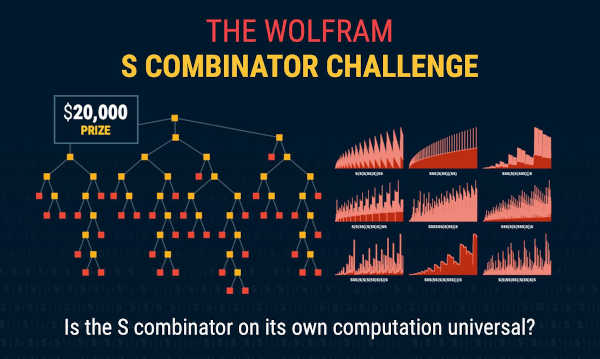In the past, Stephen Wolfram has awarded prizes for evidence consistent with his particular way of thinking about the world. Now we have a prize to prove that S is all you need.
Wolfram recently made a personal discovery of combinatorial computation, which is basically a different way of writing the lambda calculus or other production system. That sounds complicated, but it isn’t. In fact, it’s easy to understand, especially if you’re a programmer.
READ MORE: Do you think it is possible to request a joint Personal Loan?
Yes, you are able to request a Personal Loan in conjunction with your spouse or other family members such as your parents, siblings or grandparents. One advantage to applying for a Personal Loan along with co-borrowers is that lenders will take into account both applicants’ income when deciding the amount of the loan. This means you can get a bigger amount of loan attractive offer right? However, it is important to be aware that if your co-borrower has a poor credit rating There is a chance that the lender will reject the loan application.
What is the combination calculation?
It was invented in 1920 and Wolfram claims it was the earliest example of a universal computation, i.e. equivalent to a Turing machine or something else that has the same performance as a Turing machine. It’s very easy to understand, as long as you think of it as a game of symbols – those are the lambda calculi and other rules of production.
The combination calculation has only two rules or combiners:
K – the manufacturer of constants
(K x) maps any symbol onto x, ie. it is a constant function and
(K x) y = x
S – a general function application:
(S (x, y, z)) = (xz (yz))
which you can think of as x applied to y after each applied to z.
You can get an idea of ​​how things work by deriving the identity function, i.e. the combiner which, when applied to a symbol, gives this symbol:
(SKK x) = (K x (K x) = x
and I = SKK
From here you can create sequences of symbols that can be thought of as integers and a combiner that “adds one” to each sequence by moving them to the next in the sequence. That’s arithmetic, and from here we have the rest of the math.
The K and S combiners have been shown to be universal in the sense that they can be used to implement a Turing machine which in turn can compute anything that is computable. (Actually the proof is a two-step process – you can show that any lambda calculus term can be converted to an expression with K and S, and since the lambda calculus is like a Turing machine, so are combiners.)
After looking at a few examples, Wolfram has come to the conclusion that it is likely that S alone is universal.
This is not unlikely as there are a number of logical functions such as NAND that are universal and even individual computer instructions such as the Intel x86 mov instruction that are universal.
So how do you prove that S is universal?
There are a few suggestions on Wolfram’s blog:
The best case for me is specific Wolfram Language code that implements the solution. If the S-combiner is indeed universal, the code should provide a “compiler” that accepts, for example, a Turing machine or a cellular automaton specification and generates an S-combiner initial condition along with code for the “detector” and “decoder” ” . But how can we check that this code is “correct”?
Personally, my preferred attack would be to show that K cannot be derived from anything other than S. If S is universal, then it must be possible. Of course, if S is not universal, we could spend a long time deriving K without proving anything.
This is an interesting challenge because it’s easy to understand and doesn’t require in-depth math to get started. Even so, I would recommend reading the rest of the blog and familiarizing yourself with how the K and S work first.
![]()
- Mike James is the author of The theory guide for programmers what as subtitle “Great Ideas Explained” suggests presenting the basic ideas of computer science such as computability, lambda calculus and Turing machines in an informative yet informative manner.
More information
1920, 2020 and a $ 20,000 Prize: Announcing the S Combinator Challenge
On the subject of matching items
A new kind of science is ten
$ 30,000 for rule 30
A calculable universe – Roger Penrose on nature as calculation
The universe as a computer
To be informed about new articles on I Programmer, subscribe to our weekly newsletter, subscribe to the RSS feed and follow us on Twitter, Facebook or LinkedIn.



